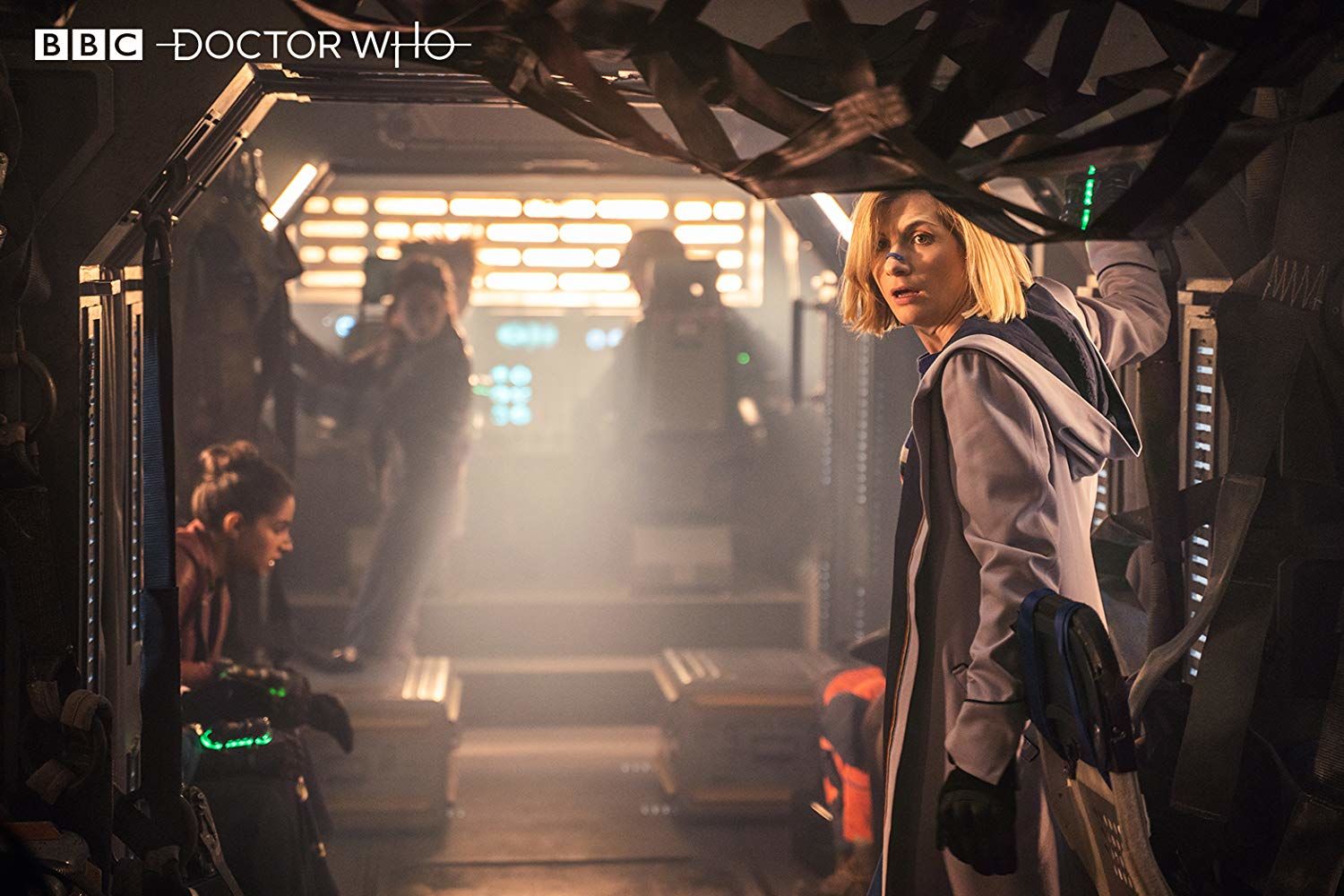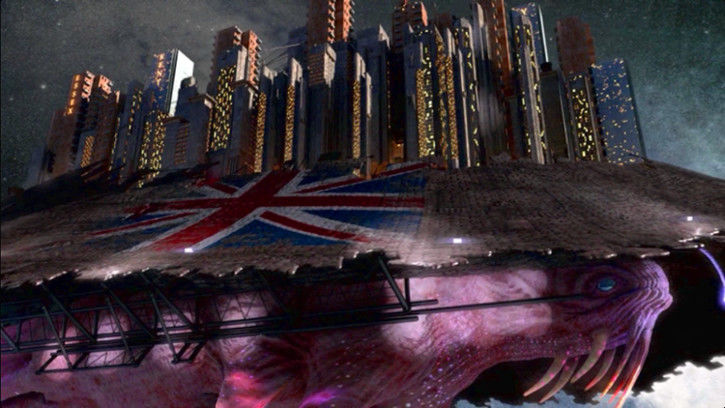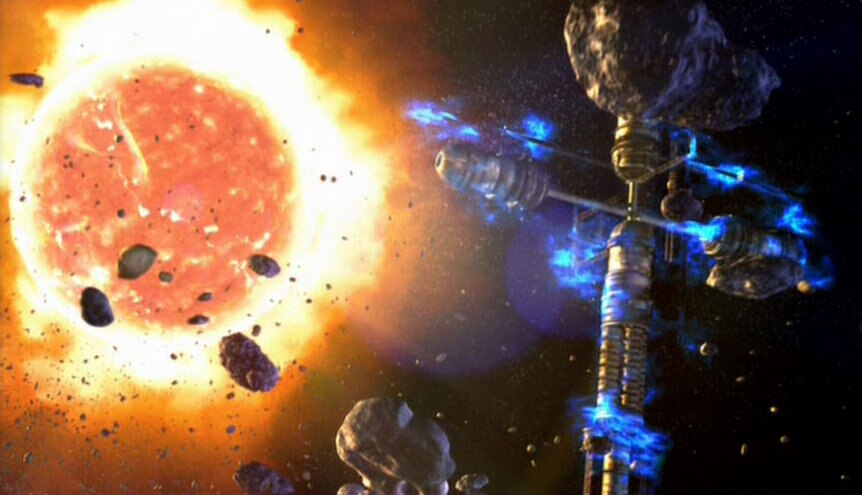Create a free profile to get unlimited access to exclusive videos, sweepstakes, and more!
Canotated: Doctor Who's vision for the future just got a big, gross twist

At first, it seemed like episode 3 of Doctor Who Season 12 was going to be a run-of-the-mill space-vacation-gone-wrong story, but by the end, the stakes had gone through the roof and into a very dirty atmosphere.
Turns out, the burnt-out, toxic "orphan planet," was really the future version of a very familiar but utterly recognizable planet. The fact that the episode aired on a day with record-high January temperatures is cause enough for concern, but when you add on the more important stuff, like the implications for Doctor Who canon, and the fact that it could have just changed the timeline? You may just want to take a deep breath before you join us on a deep dive into the past futures of Doctor Who and what it could all mean.
**Spoiler Warning: There are spoilers ahead for Doctor Who Season 12, episode 3, "Orphan 55."**
Midway through the episode, as the Doctor (Jodie Whittaker), her companions, and the survivors of Tranquility Spa are running for their lives, the Doctor makes a startling revelation. This planet, codenamed "Orphan 55," isn't just some random toxic planet.
"Orphan 55! It's Earth! Your future," the Doctor tells Yaz and Graham. And what of the gross, monstrous Dreg "aliens" who breathe in carbon dioxide? Yeah, those are just mutated humans from the far, far future.
From a thematic storytelling standpoint, this episode is an effective and direct statement about climate change, but again, what matters most is how this dire prediction compares to what Who canon has previously told us about the future of Earth. Does this actually match up with what we already know? Actually, it might fit perfectly.
When the Doctor uses her brief mind-meld on one of the Dregs, she sees images of massive catastrophes on an Earth that seems to mostly have 21st-century imagery. We don't know what year "Orphan 55" happens in and according to existing Who canon, a populated, and thriving version of Earth exists at least until the year 200,000. In season 1, the episodes "The Long Game," and "The Parting of the Ways," establish that the 9th Doctor (Christopher Eccleston) was aware of something called "The Fourth Great and Bountiful Human Empire," which was set in a future (circa about 200,000) in which Earth was doing really, really well. However, in "The Long Game" (also set in the year 200,000) the Doctor realized that Earth and humanity had stagnated due to alien interferences in the timeline.
In season 1, these negative changes were — in theory — caused by the Jagrafess (and Simon Pegg), and later, the Daleks. But in "Orphan 55," it's heavily implied that anything bad that happens to the Earth in the future is probably the fault of climate change deniers and international warlords, not an alien and the dude from Spaced and Shaun of the Dead.
At the end of the episode, the Doctor puts it like this: "It's one possible timeline. It's one future." On the one hand, we can read this as a rallying call, but on the other hand, it's possible Who canon hasn't been contradicted at all, and this future for Earth is the same one that the Doctor has always know about.
Throughout the history of Doctor Who, the assertion that human beings would exist throughout the galaxy, post-Earth, has been a recurrent theme. And the reason that humans do persist after Earth becomes uninhabitable is that the planet was haphazardly evacuated after a major calamity. Arguably, this continuity starts with the classic Tom Baker 4th Doctor episode, "The Ark in Space." This established that a mass exodus occurred from Earth, possibly because of solar flares. If the Earth's atmosphere was sufficiently degraded, a solar flare could be much more deadly than it is now. Plus, in the new episode, the Doctor is worried about solar exposure.
Most interestingly though, the idea several colony ships evacuated Earth around this exact same time period is revisited in the 11th Doctor episode "The Beast Below" (season 5) and again, in the 12th Doctor episode "Smile" (season 10.) In essence, the Doctor has been meeting the immediate survivors of this Earth-catastrophe for several years, and across at least four incarnations
Assuming "Orphan 55," takes place well after the year 200,000, but before the events of "Utopia," it's totally reasonable to assume that at some point in human history, climate change and war do end up destroying even a far-future version of Earth, hundreds of thousands of years in our own future. (Again, the solar flare thing from "The Ark in Space" works with a climate change-caused calamity.) Plus, Doctor Who has already dabbled with notions that mutated and monstrous humans are the eventual, and final result of human evolution.
The primary twist of the Season 3 episode "The Last of the Time Lords," reveals that the maniacal sphere-like cyborgs known as the "Toclafane," were, in fact, the final version of human beings. These twisted versions of humans didn't originate on Earth — they were evolved from the remnants of humans living on the planet Malcassairo in the year 100,000,000,000,000. But, this piece of the puzzle matters because the episode "Utopia," also featured vampiric, cannibalistic humanoids called "the futurekind." Obviously, the "futurekind," don't look much like the Dregs in "Oprhan 55," but the idea is the same. (It's also notable that an earlier version of the Master was connected to the Toclafane and the futurekind in the same season 3 episodes and the Master is back in Season 12, too.)
But perhaps the most telling Easter egg in "Orphan 55" is the moment just before the Doctor mind-melds with the Dreg. Crucially, the Dreg breathes out oxygen, which allows the Doctor to survive. This might reference a moment from the 9th Doctor episode "The End of the World" (again, contemporary Season 1) in which the Doctor gives an alien "the air from my lungs" as a gift. In "The End of the World," Rose Tyler and the Doctor witness the final moments of the Earth; the exact second when the sun goes nova and engulfs the inner planets, roughly in the year 5,000,000,000. At this point in the future, something called a "National Trust," had been established to preserve Earth in its "classic" configuration. Complicated force fields were held in place to prevent the final force of the nova, but eventually, it was decided Earth would finally be destroyed.
If we put the events of "The End of the World" in the same eventual future of what we see in "Orphan 55," it could suggest that perhaps Kane's plan to terraform Earth might have actually worked out. And that would mean that maybe, she and her daughter survived the Dreg attack. Because if Earth was somehow restored to its former glory, and became a quasi-tourist attraction in the distant future, then it seems like the events of "Orphan 55" simply happen in between all of that.
Or, to put it another way, the dead-end future of Earth is the real future of Earth in Doctor Who, but that doesn't necessarily mean it's the end.

















